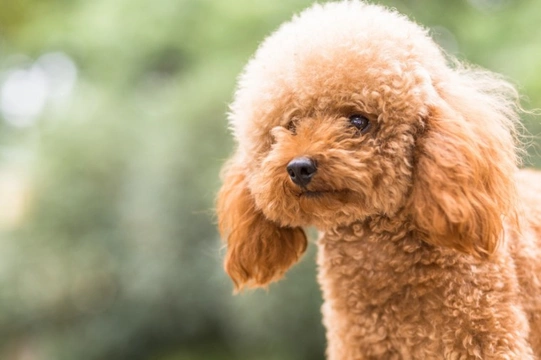
Can toy poodles swim?
The toy poodle is the smallest of the three recognised poodle size variants in the UK, all of which are actually classed as breeds in their own right. However, they are all the same breed and share all of the same traits aside from size, including a working history, reasonably high energy levels, and likes and dislikes.
The toy poodle might be petite and finely built and look somewhat ornamental; but they’re still poodles, which mean they have a lot in common with their larger relatives. While many of us envision poodles of all sizes as primped and pampered pets, the breed actually has a working history, high energy levels, and extremely high intelligence; and they are in fact the second most intelligent dog breed in the world bar none.
Even though they’re small, toy poodles are lively dogs that like to have a lot of exercise and that are fairly outgoing for toy dogs, as well as generally being quite inquisitive and not afraid to try new things.
This, coupled with their high energy levels, means that a common question asked about the breed is “can toy poodles swim?” Yes, toy poodles can swim perfectly well, and they’re often keen swimmers too.
This article will look at this topic in more detail, and provide some advice on swimming and toy poodles for toy poodle owners. Read on to learn more.
Can toy poodles swim?
Yes, toy poodles can swim, despite their small size and rather delicate-looking appearance. Swimming ability is less to do with a dog’s size per se (although this does actually have an impact, which we’ll look at in more detail shortly) and more with their proportions and build, and the toy poodle has a conformation and general construction that is well designed for swimming.
They are reasonably lean dogs with long, lean musculature rather than stocky and heavy muscles, and they have reasonably long legs compared to their bodies, proportionate and straight backs, and long noses with open nostrils. All of these things combined make toy poodles physically capable of swimming, and mean they don’t have any traits that would cause them to struggle unduly when in the water.
Also, the poodle coat plays a part here too; it is tightly curled and coiled close to the body, which actually helps to repel water and ensure that the dog doesn’t get waterlogged and weighed down by their coat, which can soon compromise their swimming ability.
Are toy poodles good swimmers?
Yes, the toy poodle can reasonably be called a good swimmer, although this does mean that they’re a good swimmer in relation to their size; and so, would not have the same kind of stamina or speed in the water as a larger dog with the same traits, such as their bigger standard poodle cousins.
Th size of a dog factors into their swimming ability in a couple of ways, which means that while the toy poodle is likely to be a better swimmer than most dogs of an equivalent size, they won’t swim as well as larger dogs with the same conformation.
First of all, a smaller dog will not be able to swim as fast or as effortlessly as a larger one like for like; and also, they’ll be affected more by tides and currents, having to work harder in the water. This in turn means they will tire out faster, and so will have a lower level of stamina for swimming than a larger dog.
Do toy poodles like to swim?
In something of a divergence from most toy dog breeds when it comes to swimming, toy poodles as a whole do indeed like to swim. Dogs tend to enjoy things they’re good at or don’t find overly hard, and toy poodles don’t struggle in the water. They‘re also fun loving and have high energy levels, all of which helps to ensure most dogs of the breed enjoy swimming too.
Swimming is generally quite intuitive for toy poodles and comes naturally to them, largely because of the aforementioned conformation traits that means they don’t struggle in the water. They can keep their nose up to breathe without any problems, they have a natural balance in the water, and their legs are proportionately long enough to move them along without the need to paddle furiously.
All of the poodle dog breeds also have historical working origins, which took various different forms as poodles are so smart and versatile. The breed as a whole across all size variants has a natural affinity with the water, and they tend to be inquisitive about it and keen to get in.
However, every dog is an individual, and a general breed tendency to enjoying swimming doesn’t mean that this will apply to every dog of the breed; and if the water is cold or they struggle, they probably won’t enjoy themselves, or be keen to get into the water again in the future.



